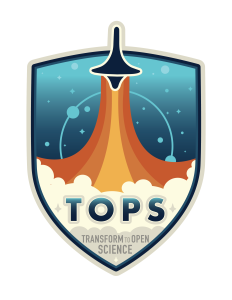Since it was authorized by Congress in 1958, the National Aeronautics and Space Administration (NASA) has been committed to sharing the scientific information it produces. Now the agency is developing resources and training to encourage others in the broader research community to further that sharing by embracing open science practices.
NASA is aiming high – it has designated 2023 as the Year Of Open Science. Events and activities are being planned on campuses and at society annual meetings to inspire open science engagement.
 This effort is part of NASA’s multi-year Transform to Open Science (TOPS) initiative TOPS jump-starts a suite of coordinated activities designed to increase the understanding and adoption of open science principles and techniques, accelerate major scientific discoveries, and broaden participation by historically excluded communities in science.
This effort is part of NASA’s multi-year Transform to Open Science (TOPS) initiative TOPS jump-starts a suite of coordinated activities designed to increase the understanding and adoption of open science principles and techniques, accelerate major scientific discoveries, and broaden participation by historically excluded communities in science.
“NASA has a long legacy of supporting open science, particularly open data,” says Steven Crawford, science data officer with NASA’s Science Mission Directorate (SMD). “COVID has really highlighted the potential in the scientific community to come together and quickly innovate. We’re facing major challenges–climate change, environmental justice, planetary protection, life on other planets, and mysteries of the universe–and we need everyone’s help to solve them. That’s why we want to be open as possible, and also as accessible and inclusive as possible.”
Chelle Gentemann, an oceanographer based in California and long-time NASA funded research scientist is the science lead for TOPS, and says the hope is for NASA to build on recent attention focused on open science. In just the last six months, the National Academies released a toolkit for fostering open science practices, France issued its second open science plan, UNESCO approved Recommendations on Open Science, and NASA released its Science Mission Directorate’s Scientific Information Policy (SME) SPD-41.
“We want to capitalize on this momentum and excitement,” says Gentemann. “It takes effort to learn how to be open and collaborate with others productively. You don’t just click ‘select open access’ on your journal, and then you’ve done open science. It’s more complicated than that. Scientists need to start incorporating open practices from inception.”
The idea for TOPS began with a two-page document that Gentemann sent NASA last summer outlining the barriers to open science and potential solutions. While she embraced open practices in her own work with satellite data, she was having trouble collaborating with the rest of her community not yet familiar with open science tools. However, she sensed a potential shift in culture in the past year with new policies around open science emerging. “We have this once in a lifetime opportunity,” Gentemann says. “And if we’re going to change how science is done, we need to reimagine it so that more people can participate, and it’s more equitable.”
That message resonated with NASA, in part, Gentemann believes because it came from a researcher as a grassroots movement rather than a top-down edict. Partnering with the scientific community, NASA’s plan is to expose more people to the advantages of operating in the open, offer practical tools, and discuss ways to craft incentives. The Year Of Open Science will include seminars to teach researchers how to make sharing a part of their workflow, build capacity, and advocate for institutional policies that support open science.
Many of the barriers that researchers have faced with working openly have been solved in the last decade by open source and open science developers, says Gentemann. Education is needed to build awareness of the resources. Then it takes time and motivation for scientists to learn how to incorporate the new methods into their work.
As more scientists earn certifications and embrace open science, Gentemann says, they will see the benefits. “It will advance major scientific discoveries and make interdisciplinary science much easier,” she says. “Once we have enough scientists participating in open science, and we have everyone building on each other’s results, we’re going to start reaching major scientific discoveries much faster.”
Crawford says the initiative supports NASA’s mission and belief that conducting science in the open builds trust, accelerates science and allows access to public information for academic, international and commercial partners. The 2023 effort aligns with NASA’s Science Mission Directorate’s Strategy Data Management and Computing for Groundbreaking Science (SME)
NASA’s focus for the Year of Open Science is on the Earth and space science community, and NASA welcomes collaboration with academic, commercial, governmental and international organizations to support open science and open science events. For information about how to join TOPS and get involved, go to NASA’s Open-Source Science Initiative page here.